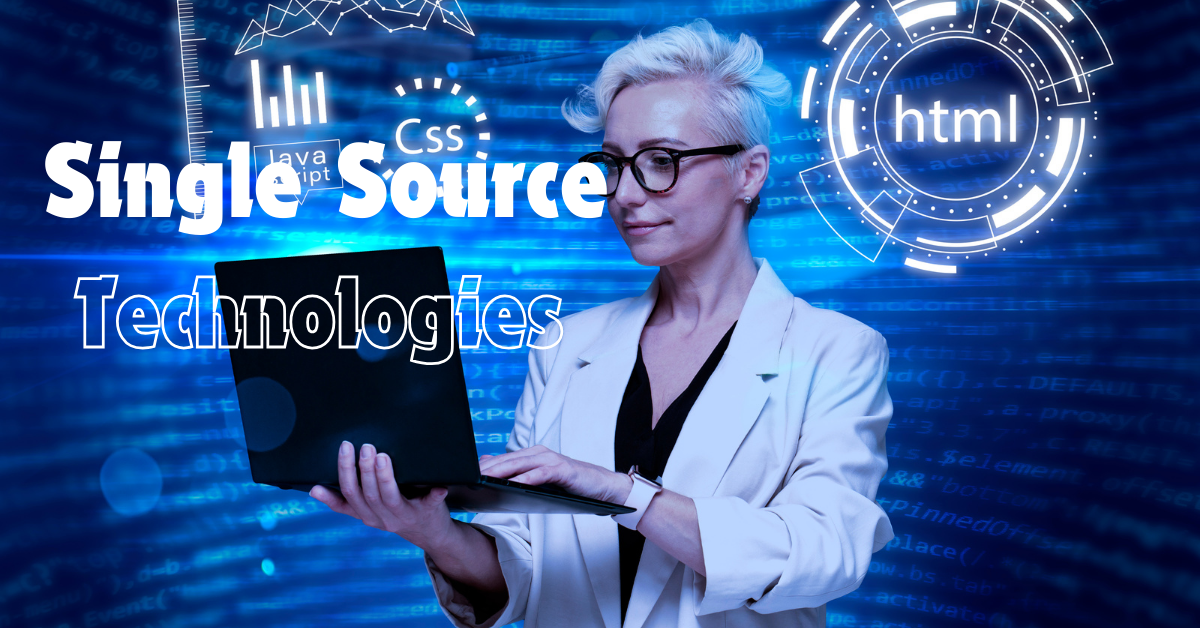In the era of rapid digital transformation, businesses are constantly seeking ways to optimize processes, reduce redundancy, and improve efficiency. A significant approach that has gained traction is the use of “Single Source Technologies.” This concept has become particularly relevant in the fields of content management, software development, manufacturing, data management, and supply chain management. Single Source Technologies refer to systems, methodologies, or tools designed to maintain, manage, and utilize information or data from a single point of origin, ensuring consistency and accuracy across multiple platforms or applications.
Understanding Single Source Technologies
Definition of Single Source Technologies
Single Source Technologies (SST) is a paradigm wherein data or content is created, stored, managed, and updated in a centralized repository, from which it is accessed or utilized by various systems, platforms, or applications. This ensures that all users, systems, and applications reference the same data set or content, thereby eliminating redundancy, reducing errors, and ensuring consistency.
Historical Background and Evolution
The concept of single-sourcing originated in the manufacturing sector in the 1980s, particularly with the rise of Just-In-Time (JIT) inventory management. Over time, the idea has evolved and been applied in various domains, including information technology, software development, and digital content management, particularly with the advent of digital transformation and the need for efficient data management strategies.
Importance of Single Source Technologies
- Data Consistency: Ensures that all stakeholders have access to the most up-to-date and accurate data.
- Efficiency: Reduces duplication of efforts, allowing businesses to optimize their resources.
- Cost-Effective: Minimizes costs associated with managing multiple data repositories or content management systems.
- Improved Collaboration: Facilitates better communication and collaboration between different departments or stakeholders within an organization.
Types of Single Source Technologies
Single Source Content Management Systems (CMS)
Single Source Content Management Systems are designed to create, manage, and distribute content from a single repository. This approach is widely used in technical writing, e-learning, and digital publishing.
- Definition and Features
- Examples: MadCap Flare, Adobe RoboHelp
- Benefits: Consistency, Scalability, and Reusability
Single Source Software Development Environments
In software development, single-sourcing refers to the use of centralized code repositories, libraries, and tools that ensure uniformity and compatibility across various development environments.
- Version Control Systems: Git, SVN
- Integrated Development Environments (IDEs): Visual Studio, Eclipse
- Continuous Integration/Continuous Deployment (CI/CD) Tools: Jenkins, GitLab CI
Single Source Data Management Systems
Single Source Data Management focuses on maintaining a single source of truth for all data within an organization, often through the use of Master Data Management (MDM) systems.
- Data Warehousing and Data Lakes
- ETL (Extract, Transform, Load) Processes
- Examples: Apache Hadoop, Snowflake
Key Benefits of Single Source Technologies
Consistency and Accuracy
With all data and content managed from a single point, organizations can ensure that all stakeholders access consistent and accurate information.
Enhanced Collaboration and Communication
(SST) facilitate better communication and collaboration by ensuring that all team members work with the same information set.
Cost Efficiency
By reducing the need for multiple data sources or content management systems, organizations can significantly reduce operational costs.
Improved Decision Making
Access to accurate and up-to-date information improves decision-making processes across departments.
Implementation Strategies for Single Source Technologies
Assessing Organizational Needs
- Conducting a Needs Assessment
- Identifying Data Silos and Redundancies
Choosing the Right Technology
- Evaluating Technology Solutions
- Vendor Selection Criteria
- Customization vs. Off-the-Shelf Solutions
Developing a Roadmap
- Project Planning and Timeline
- Budgeting and Resource Allocation
Integration with Existing Systems
- Data Migration Strategies
- Ensuring Compatibility with Legacy Systems
Training and Change Management
- Developing Training Programs
- Managing Resistance to Change
Challenges and Limitations of Single Source Technologies
Data Security and Privacy Concerns
Centralized data repositories can be vulnerable to cyberattacks or unauthorized access.
Integration Complexities
Integrating single source technologies with existing legacy systems can be complex and resource-intensive.
High Initial Investment
The implementation of (SST) can require a significant initial investment in terms of time, money, and resources.
Change Management Issues
Resistance to change from employees can pose a significant challenge to the successful implementation of (SST).
Artificial Intelligence and Machine Learning Integration
The integration of AI and ML with (SST) will enable more intelligent data management, predictive analytics, and automated decision-making.
Cloud-Based Single Source Solutions
The rise of cloud computing is facilitating the development of more scalable and flexible single source solutions.
The Role of Blockchain in Single Source Data Management
Blockchain technology offers a decentralized approach to single source data management, ensuring data integrity and security.
The Emergence of No-Code and Low-Code Platforms
These platforms enable organizations to implement single source solutions with minimal coding, reducing the barrier to entry.
Conclusion
Single Source Technologiess are a vital component of modern business strategies, helping organizations streamline operations, reduce costs, and improve decision-making processes. However, successful implementation requires a comprehensive understanding of organizational needs, careful planning, and effective change management.
FAQs
1. What is a Single Source of Truth (SSOT)?
A Single Source of Truth (SSOT) is a concept where all data and information within an organization are derived from a single point, ensuring consistency and accuracy.
2. How Do Single Source Technologies Improve Data Management?
They centralize data storage and management, reducing redundancy and ensuring consistency across different platforms and applications.
3. What Are the Key Challenges in Implementing Single Source Technologies?
Key challenges include data security concerns, integration complexities, high initial investment, and resistance to change from employees.
4. Can Single Source Technologies Be Used in Small Businesses?
Yes, small businesses can benefit from by reducing operational costs, improving data accuracy, and enhancing collaboration.
5. What Is the Future of Single Source Technologies?
The future of single (SST) lies in AI integration, cloud-based solutions, blockchain, and no-code platforms, which will further enhance their capabilities and accessibility.

